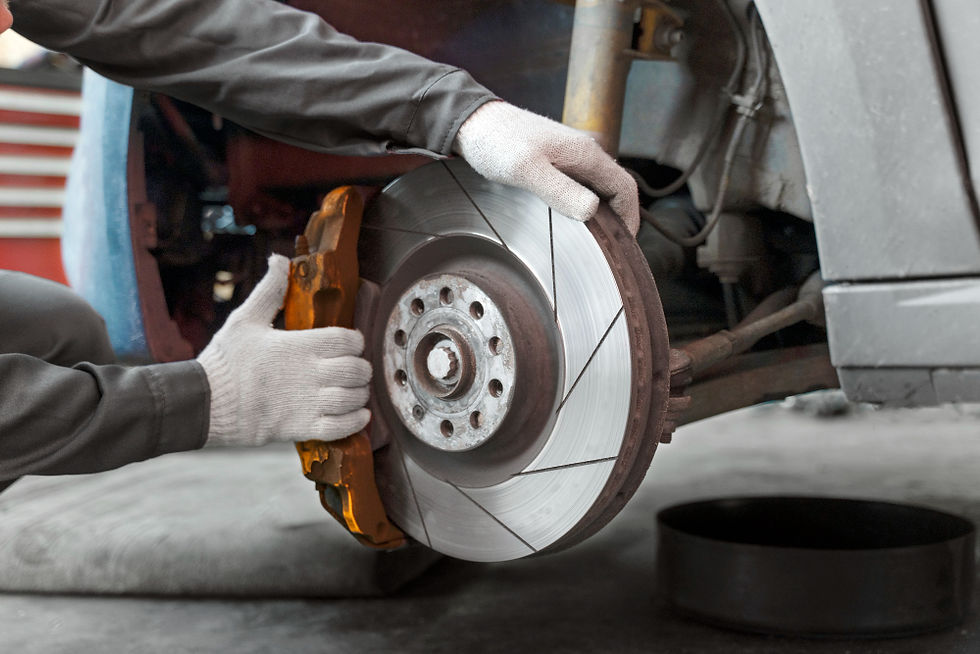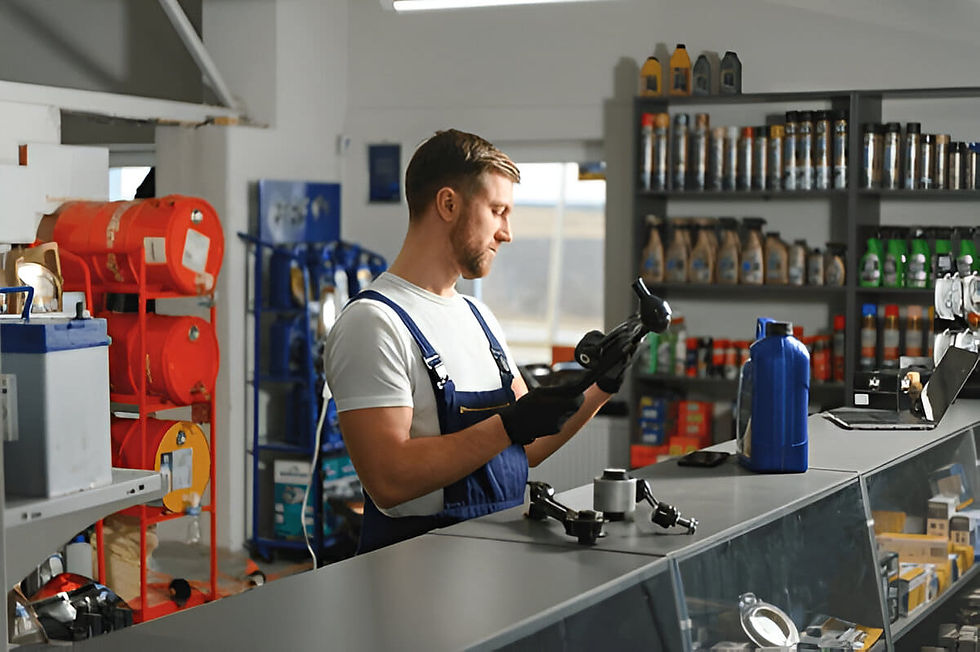Top Tips for Maintaining Your Holden Car Parts
- Molly Crowe
- Sep 3
- 6 min read
Let's be honest have you ever wondered why some Holden cars seem to run forever whilst others struggle after just a few years? What's the secret to keeping your beloved Holden purring like new? And more importantly, how can you avoid those eye-watering repair bills that seem to pop up at the worst possible times?
Looking after your Holden doesn't have to be a mystery. Whether you're driving a classic Commodore, a trusty Ute, or any other model from this iconic Australian brand, proper maintenance is the difference between a reliable daily driver and a constant headache. The good news? With the right knowledge and a bit of regular attention, you can keep your Holden running smoothly for years to come.

This guide walks you through everything you need to know about maintaining your Holden car parts. From understanding basic maintenance schedules to spotting warning signs before they become expensive problems, we'll cover the lot. You'll learn which parts need regular monitoring, how to tackle basic maintenance tasks yourself, and when it's time to call in the professionals. Plus, we'll share insider tips on finding quality replacement parts without breaking the bank and adapting your maintenance routine to Australia's unique climate conditions.
Understanding Your Holden's Maintenance Needs
Why Regular Maintenance Matters for Holden Vehicles
Think of your Holden like a marathon runner - it needs proper care to perform at its best. Regular maintenance isn't just about preventing breakdowns; it's about preserving your car's value, improving fuel efficiency, and making sure you're safe on the road. When you stay on top of maintenance, small issues get caught early before they turn into major repairs that cost a fortune.
Australian conditions can be particularly harsh on vehicles. From scorching summer heat to coastal salt spray, your Holden faces challenges that can accelerate wear and tear. Regular maintenance creates a protective barrier against these elements, helping your car withstand whatever Mother Nature throws at it.
Common Issues That Affect Holden Cars
Every Holden owner should know about the typical problems that crop up across different models. The Commodore, for instance, has been known for timing chain issues in some V6 engines, particularly in models from the mid-2000s. Catching these early through regular inspections can save you from engine failure down the track.
Electrical gremlins are another common concern, especially in older models. From faulty window regulators to temperamental central locking systems, these issues often start small but can become frustrating if ignored. The cooling system is another area that demands attention – water pump failures and radiator problems have plagued certain models over the years.
Essential Holden Car Parts to Monitor Regularly
Engine Components That Need Your Attention
Your engine is the heart of your Holden, and several components need regular monitoring to keep it healthy. Start with the basics: engine oil should be checked monthly and changed according to your service schedule. Dark, dirty oil or low levels can spell disaster for your engine's internals.
The air filter is another simple but vital component. A clogged filter restricts airflow, reducing performance and fuel economy. In dusty Australian conditions, you might need to replace it more frequently than the manual suggests. Spark plugs, whilst longer-lasting in modern engines, still need checking – worn plugs cause rough idling, poor fuel economy, and starting problems.
Brake System Parts and Their Maintenance Schedule
Your brakes are obviously crucial for safety, yet many drivers neglect them until they hear that dreaded squealing sound. Brake pads typically need replacing every 40,000 to 60,000 kilometres, but this varies based on your driving style and conditions. City driving with frequent stops wears pads faster than highway cruising.
Brake fluid is often overlooked but equally important. It absorbs moisture over time, which lowers its boiling point and can lead to brake fade. Most manufacturers recommend changing it every two years, regardless of kilometres driven. When checking your brake fluid, look for a clear, amber colour – dark or murky fluid needs immediate attention.
Suspension and Steering Components
A smooth, controlled ride depends on healthy suspension and steering components. These parts work hard, especially on Australia's varied road surfaces. Shock absorbers typically last 80,000 to 100,000 kilometres, but rough roads can shorten this significantly. Signs of worn shocks include excessive bouncing, nose-diving when braking, and uneven tyre wear.
Ball joints and tie rod ends are critical for safe steering and handling. These components can wear gradually, making problems easy to miss until they become severe. Have them checked during regular services – play or looseness in these parts affects wheel alignment and can cause dangerous handling issues.
Electrical System Parts
Modern Holdens rely heavily on electrical systems, from engine management to comfort features. The battery is your starting point – literally. Most batteries last three to five years, but extreme temperatures can shorten this. Regular testing can prevent that dreaded clicking sound on a cold morning.
The alternator keeps everything powered whilst driving and charges your battery. Warning signs of alternator problems include dimming lights, electrical accessories working intermittently, or the battery warning light illuminating. Don't ignore these symptoms – a failing alternator can leave you stranded and damage your battery.
How Often Should You Service Your Holden?
Manufacturer-Recommended Service Intervals
Holden's service schedules vary by model and year, but most follow a similar pattern. Minor services typically occur every 10,000 to 15,000 kilometres or six months, whichever comes first. These include oil changes, filter replacements, and basic inspections. Major services happen less frequently but involve more comprehensive checks and component replacements.
Following the manufacturer's schedule isn't just about keeping your car running well – it's often required to maintain your warranty. Even after the warranty period, sticking to these intervals helps prevent expensive repairs and maintains your car's resale value. Your owner's manual contains the specific schedule for your model, including what's checked or replaced at each service.
Signs Your Holden Needs Immediate Attention
Sometimes your Holden will tell you it needs help between scheduled services. Strange noises are often the first warning – squealing brakes, grinding gears, or knocking from the engine all demand immediate investigation. Ignoring these sounds usually leads to more extensive and expensive damage.
Visual cues are equally important. Fluid leaks under your car, whether oil, coolant, or brake fluid, need prompt attention. Check your dashboard warning lights regularly and never ignore them, especially the check engine light, oil pressure warning, or temperature gauge. These systems are designed to alert you before major damage occurs.
DIY Maintenance Tips for Holden Owners
What Maintenance Can I Do Myself on My Holden?
Plenty of maintenance tasks are well within reach of the average Holden owner, saving money and helping you understand your car better. Checking and topping up fluids is the simplest starting point – engine oil, coolant, brake fluid, windscreen washer fluid, and power steering fluid all have easily accessible reservoirs with clear markings.
Replacing air filters and cabin filters requires no special tools and takes minutes. These filters are usually behind plastic covers secured with clips or simple screws. Changing windscreen wipers is another easy win – worn wipers are dangerous in rain, and replacement takes seconds once you know the technique.
Essential Tools Every Holden Owner Should Have
Building a basic tool kit doesn't require a huge investment, and having the right tools makes maintenance tasks much easier. Start with a quality socket set that includes metric sizes – most Holdens use metric fasteners. Add a set of spanners, screwdrivers (both Phillips and flathead), and pliers. These cover most basic maintenance tasks.
A trolley jack and jack stands are essential for any work requiring wheel removal or under-car access. Never rely on the emergency jack for maintenance work – it's only designed for roadside tyre changes. A torque wrench helps you tighten critical fasteners correctly, preventing damage from over-tightening or dangerous under-tightening.
Step-by-Step Guide to Basic Holden Maintenance Tasks
Let's walk through an oil change, one of the most valuable DIY maintenance tasks. First, warm the engine slightly – warm oil drains better, but don't burn yourself on hot components. Locate the drain plug under the oil pan and position a drain pan underneath. Remove the drain plug carefully, allowing oil to drain completely whilst you replace the oil filter.
Installing the new filter requires coating the rubber seal with fresh oil and hand-tightening until the seal contacts the mounting surface, then another three-quarters turn. Replace the drain plug with a new washer if required, tightening firmly but not excessively. Pour in the correct amount and grade of new oil, checking the level with the dipstick after running the engine briefly.
Conclusion
Maintaining your Holden car parts doesn't have to be overwhelming or expensive. As we've explored throughout this guide, a combination of regular attention, preventive maintenance, and knowing when to seek professional help will keep your Holden performing reliably for years to come. The key is consistency small, regular efforts prevent major problems and preserve your investment.
Remember that every Holden is different, from the robust Commodore to the practical Colorado, each with its own maintenance needs and common issues. By understanding your specific model's requirements and adapting maintenance to Australian conditions, you're already ahead of the game. Whether you're tackling DIY oil changes or building a relationship with a trusted mechanic, the knowledge you've gained here empowers you to make informed decisions about your car's care.












Comments